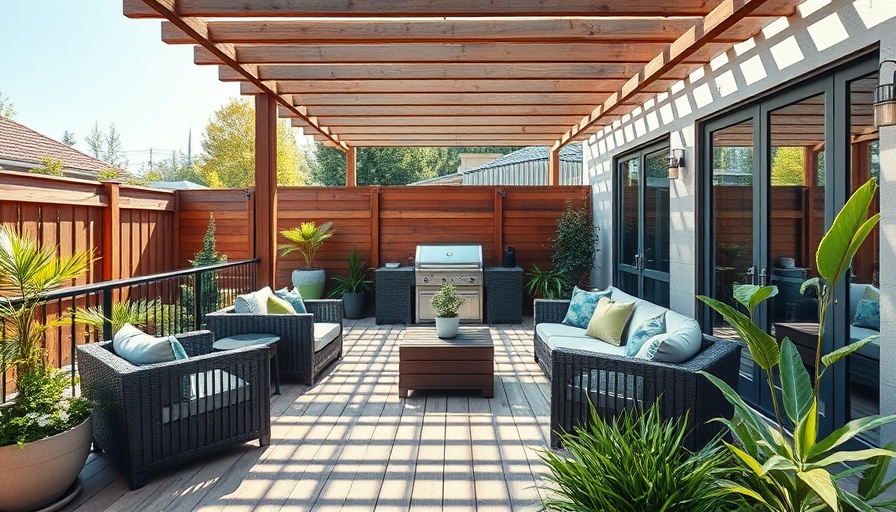
Transforming Your Outdoor Space: How to Create the Perfect Summer Retreat
As summer approaches, maintaining a breath-taking outdoor space can elevate your home environment, allowing you and your family to unwind, entertain friends, and enjoy the beautiful weather. In the latest video titled "5 Ways To Upgrade Your Outdoor Space For Summer," we see Jason and Kendall, a young couple excited to move into their first home. Although they are gearing up for a Vegas getaway, they face the challenge of sprucing up their outdoor area. Here's how you can turn your bland backyard into a stunning summer sanctuary.
In '5 Ways To Upgrade Your Outdoor Space For Summer,' the discussion dives into creative transformations for outdoor areas, exploring key insights that sparked deeper analysis on our end.
Understanding the Importance of Outdoor Aesthetics
Your outdoor area serves as an extension of your home, mirroring your indoor style while also providing a place for relaxation and recreation. The right design can enhance the overall appeal of your property, boosting your home’s value significantly. Investing time and effort into garden design and landscaping translates into not only functional beauty but also increased curb appeal. After all, who wouldn't want to come home to a vibrant, inviting space on a summer evening?
Unique Features to Incorporate for Distinctive Style
When tackling an outdoor redesign, consider mixing different materials and textures to achieve a unique look. In Jason and Kendall's renovation, we see an industrial touch reflected in their furniture and decor. Using elements like reclaimed wood and metal features creates an eclectic ambiance that is not only trendy but also environmentally sustainable. Utilizing materials such as cable drums for seating or upcycling an old table are great ideas for adding character while staying budget-friendly.
Making Smart Landscaping Choices
Landscaping is pivotal when creating the ultimate paradise outdoors. Choose plants that thrive in your local climate and consider including a variety of textures and colors for visually stunning results. Raised garden beds are highly functional for growing vegetables or flowers that can significantly improve your garden's aesthetics and provide fresh herbs for your kitchen. This reflects sustainable gardening, promoting healthy eating habits while caring for the environment.
Creating a Sustainable Eco-Friendly Garden
An eco-friendly garden doesn’t have to compromise style. Implement sustainable gardening practices such as composting, minimizing water usage with drip irrigation systems, and selecting native plants that require less maintenance. By doing this, not only do you conserve water but also cultivate a habitat for local wildlife, encouraging butterflies and birds to flourish in your garden. These practices not only create a beautiful outdoor environment but contribute positively to the ecosystem.
The Role of Outdoor Furniture and Decor
Strategic placement of outdoor furniture can enhance the functionality of your space while elevating comfort. Opt for sturdy and stylish seating options that encourage relaxation and conversation. Brighten up your patio or deck with decorative elements like string lights or lanterns to set a cozy ambiance for those long summer nights.
Inspiration to Make Your Outdoor Area Shine
If you're ready to embark on transforming your own backyard, take a cue from Jason and Kendall's journey. The renovation illustrates that with a few thoughtful touches, such as repurposing furniture, adding privacy screens, and improving garden beds, any outdoor space can be transformed from drab to dynamic. Create a watering schedule for your plants, consider mowing your lawn regularly, and get your kids involved in planting flowers—they will love watching their efforts bloom!
Now that you have these insights, why not grab your gardening gloves, head outdoors, and start creating your own summer-ready oasis? With the right approach, vigilance in garden maintenance, and a touch of creativity, your outdoor space can become the go-to summer retreat for you and your loved ones. Happy gardening!
 Add Row
Add Row  Add
Add 




Write A Comment